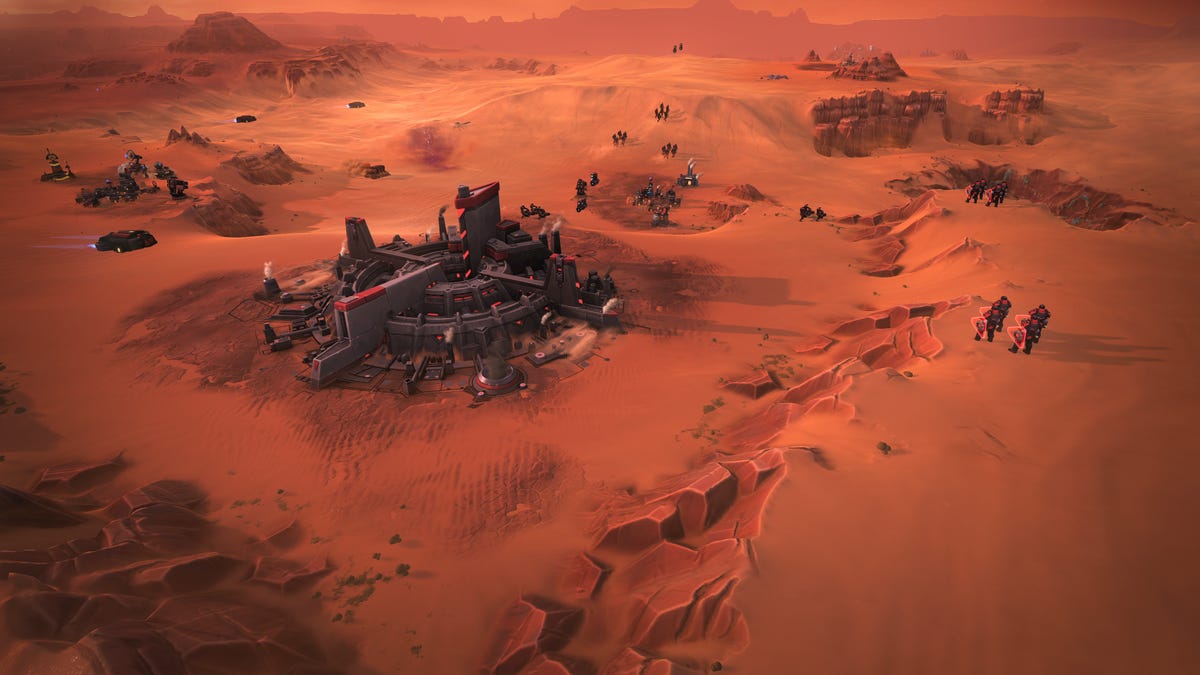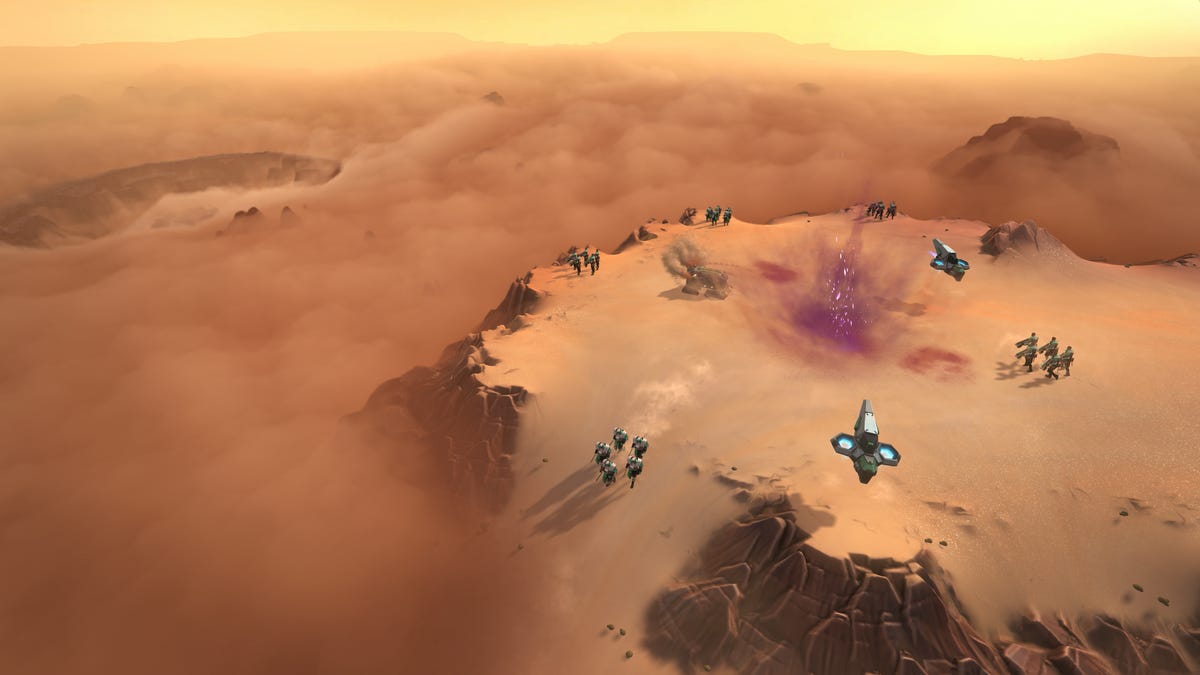The timer on my phone pinged me as I crossed my fourth hour in Dune: Spice Wars, and I felt good about my progress. I commanded a massive Fremen army through Sietch Tabr, and my crew of Fedaykin had just reclaimed an area from the Harkonnen. I heard the familiar «for Liet!» as I sent another wave in to support this new outpost, successfully boxing in what was left of the Baron’s forces. What started as a battle of four armies was about to be reduced to two, and the final army hadn’t taken any new territories from me in over an hour. Victory felt close, which was why my heart sunk extra deep when the message that I’d just been defeated unexpectedly filled the screen. While I was busy waging war on the surface of Arrakis, the leader of The Smugglers had bought enough favor within the Landsraad to secure all the support needed to ensure the planet would be under their control for the foreseeable future.
If none of that made sense to you and your only exposure to Arrakis is what you saw in Denis Villeneuve’s 2021 Dune movie, Dune: Spice Wars may not be for you. Like the Dune universe itself, this strategy game is complex in ways I still don’t feel like I fully grasp, even a week after this game in the Early Access form being made publicly available on Tuesday, 26 April. But if you’re already a fan of the generations of stories told around planet Arrakis and have a lot of time to spend on a deep strategy game, you’re going to have a great time even if the computer delivers a sudden and crushing defeat.

Dune: Spice Wars starts you off with a choice between four familiar armies: House Arrakis, House Harkonnen, The Fremen and The Smugglers. Each of these armies have essentially the same goal — to control Arrakis through any means possible. And in this real-time strategy game with 4X elements, meaning the goals are to expand, exploit, exterminate and explore, victory can come in one of three ways depending on how you play. You can take the classic strategy route and crush your enemies through sheer overwhelming violence, you can control all of the governing positions of Arrakis and rule as a duly elected leader or you can seek a victory through hegemony and buy control of Arrakis through influence gained throughout a campaign. Neither path is necessarily easier than the other, but your play preference will influence which outcome is the most readily available.
Each army has obvious strengths and weaknesses for each of these victory conditions. The beloved House Atreides makes a victory through governance easier, while Harkonnen could more easily win through hegemony if you took that path. The Smugglers are natural spies and influencers, great at building trust through trade, while Fremen of Sietch Tabr have the unique ability to gain desert power through partnership with other Sietches as you come across them. Each army is more than capable of victory through domination, but that only works in your favor if the other armies aren’t hiding in a corner of the map trying to win through other means.
No matter which army you choose or how you decide to play, once the fight for Arrakis begins you have so much to do. There are constant distractions from the task at hand, from Landsraad council votes to internal rebellions stoked by enemy armies to constant random sandworm attacks. Ignoring any of these things has dangerous consequences: Your enemies might gang up on you and encourage the Landsraad to double your cost to train soldiers or a village may suddenly turn on you and the militia garrisoned there may choose to burn it all down, forcing you to start over again. This is a separate process from maintaining your own intelligence and counterintelligence missions and making sure you have enough resources to keep expanding your empire. Oh, and the longer the game goes on, the more spice needs to be paid to CHOAM or you’ll get new taxes on other resources. It’s a lot, and can become overwhelming late in the game.

This might not be such a challenge to manage if the folks at Shiro Games had seen fit to give this game a proper tutorial. Instead, at the start of your first play-through there’s a set of text and image slides you can click through to explain how it all works. But there are so many different systems and menus that a more interactive and playable tutorial would help you along. More than this, the first couple of minutes in this game are crucial. While you’re reading a tutorial, the other three armies are securing their second spice field. The game deserves a better introduction, and I hope it gets added before this title leaves early access on Steam.
To the credit of the folks at Shiro Games, this game is easily the most faithful to the Dune universe that I’ve played. While the Atreides and Harkonnen need to rely on spice harvesters which need to be rescued at wormsign or conflict from another army, Fremen spice gatherers have no such difficulties. There are some troop types that rely on projectile weaponry, but it’s not the dominant form of combat. There are clear places the sandworms can’t travel, the movement and combat types for each army are varied in ways that make sense and the larger map feels consistent with Arrakis in the books. It’s not perfect — at one point I was playing as the Fremen and spotted a roaming group of soldiers the game had simply labeled «Locals,» which doesn’t make any sense at all — but this is loads better than what Dune fans have had in the past. I also lost a Fedaykin squad to a sandworm attack, which is technically possible in the context of the world but feels extremely unlikely given who the Fedaykin warriors are.
Dune: Spice Wars is fun even when I’m losing, but I’m also very much the target audience here. I’ve been reading these books for going on 25 years, and many of my teenage evenings and weekends were spent playing Dune II, Dune 2000 and Emperor: Battle for Dune. I get a genuine kick out of being able to zoom in and see an Ornithopter scanning a new area, or watching a Harkonnen hit squad fire up their half-shields before rushing into battle. But if I’m being totally honest, I don’t have time to dedicate 5 hours to a game on a regular basis, so I’d love to be able to jump into a quick skirmish where the only victory condition was domination. This game is great if you’re a huge Dune fan who also loves 4X strategy games and has a lot of time on your hands, but that venn diagram doesn’t have a ton of overlap. I hope Shiro Games uses the time in Early Access to at least address the learning curve so it won’t push away what audience it has.

